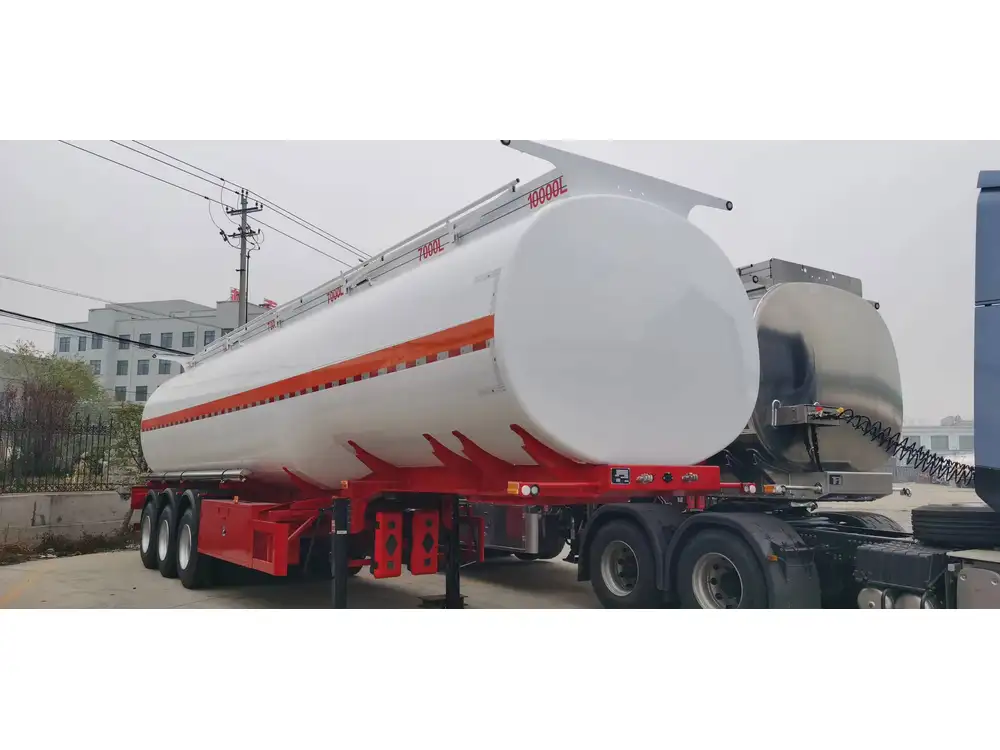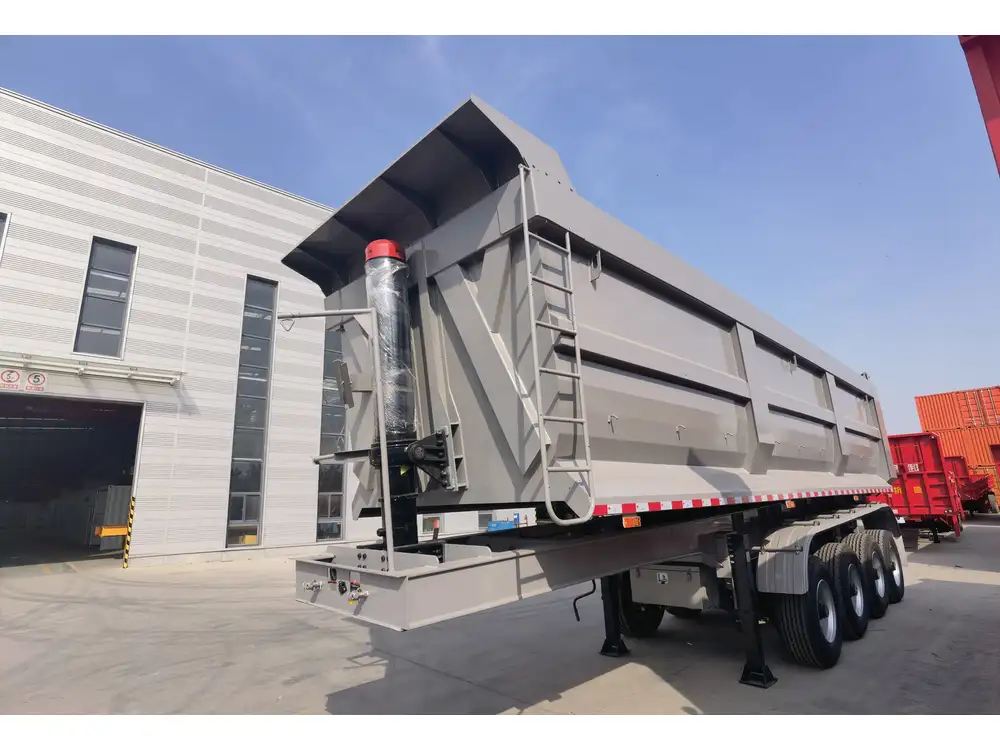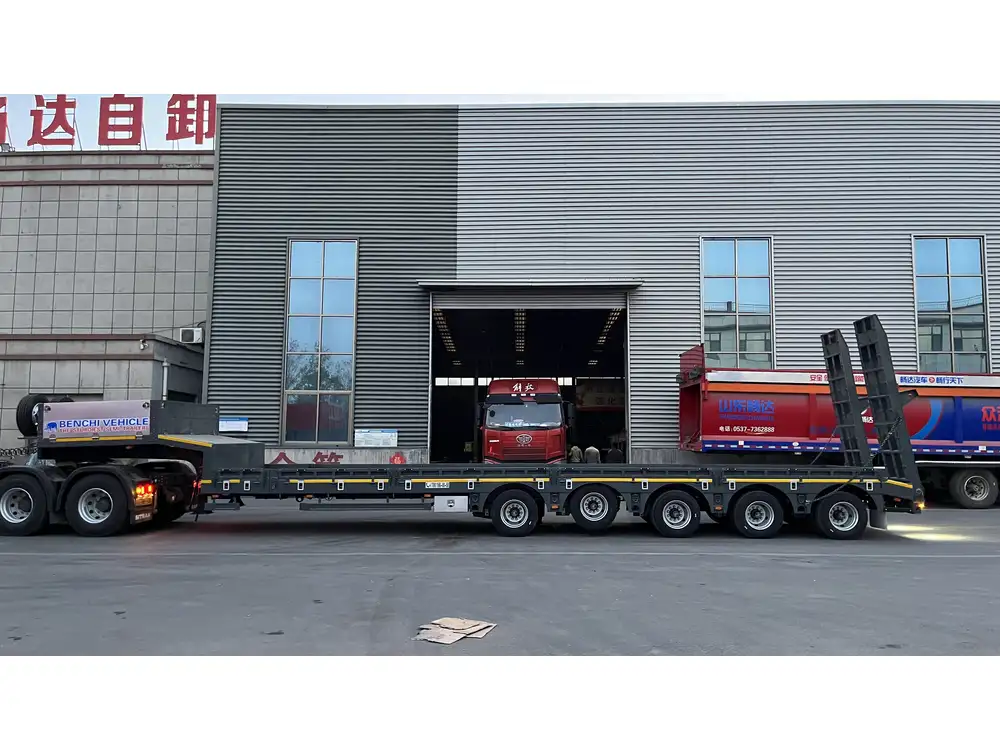In the transportation and logistics industry, understanding the capacities of semi-trailers is crucial for optimized freight management. One recurring question from fleet operators, logistics managers, and manufacturers is, how many barrels can a semi-trailer hold? This article will dive deep into the nuances of semi-trailer capacities, relevant configurations, material types, and key considerations that can impact performance and efficiency.
Semi-Trailer Basics: What is a Semi-Trailer?
Semi-trailers are a type of trailer that rely on a tractor unit for support and connection. Unlike full trailers, semi-trailers usually have one end that rests on the ground while the other end is attached to a tractor via a fifth wheel coupling. This design allows for improved maneuverability and weight distribution, critical factors in transportation efficiency.
Types of Semi-Trailers
Understanding the different types of semi-trailers can help in determining their individual capacities and uses. Here are the most common types:
| Type of Semi-Trailer | Description | Typical Uses |
|---|---|---|
| Flatbed | Open deck with no sides or top | Construction materials, machinery, heavy equipment |
| Reefer | Insulated trailer with refrigeration unit | Perishable goods, pharmaceuticals, frozen foods |
| Dry Van | Enclosed trailer | General freight, e-commerce shipments, household goods |
| Tank | Designed to carry liquids | Chemicals, fuel, food products, water |
| Dump | Equipped with hydraulic lift | Construction debris, aggregates, bulk materials |

Barrel Measurement: Understanding the Volume
Before delving into specifics of how many barrels a semi-trailer can carry, it’s essential to understand what constitutes a barrel. In terms of volume, a standard barrel (often used for liquids) in the United States is typically 31.5 gallons or 119 liters. This standard is often used in various industries, including oil and gas.
Capacity Calculations: How Many Barrels in a Semi-Trailer?
To accurately determine how many barrels can fit into a semi-trailer, several factors must be considered:
- Type of Semi-Trailer: Each type has a different internal capacity.
- Size of the Trailer: Most semi-trailers range from 28 feet to 53 feet in length.
- Volume of Cargo: Depending on whether the cargo is liquid, gas, or solid, the capacities will differ.
Common Semi-Trailer Capacities
To provide a clearer understanding, let’s explore standard sizes and their respective barrel capacities:
| Semi-Trailer Type | Length of Trailer | Approximate Capacity in Barrels |
|---|---|---|
| Tank Trailer | 40 feet | ~ 8 to 10 barrels |
| Tank Trailer | 53 feet | ~ 15 to 18 barrels |
| Flatbed | 48 feet | Irregular, typically holds bulk materials |
| Reefer | 53 feet | Often used for refrigerated liquids, variable |
| Dry Van | 53 feet | Can carry large boxes or packages, indirect |

How to Calculate Barrels per Trip
For precise calculations, it is beneficial to utilize a simple formula. Consider the following approach when evaluating:
1. Determine the Volume of the Trailer:
- A 53-foot tank trailer typically holds around 6,300 gallons.
2. Convert to Barrels:
- To convert from gallons to barrels, use the formula:
Using our example:
[ \text{Number of Barrels} = \frac{6300}{31.5} \approx 200 \text{ barrels} ]This approach demonstrates how to gauge the capability of your semi-trailer regarding liquid transport.
Practical Considerations in Semi-Trailer Transport
While calculating barrel capacities may be straightforward, several practical considerations can influence how effectively a trailers’ capacity is used:
1. Weight Limitations and Regulations
The Federal Motor Carrier Safety Administration (FMCSA) imposes weight restrictions on commercial haulers. For many states, the maximum Gross Vehicle Weight (GVW) can typically reach 80,000 pounds. Depending on the density of the liquid being transported, operators must take care to ensure they stay within legal limits.

2. Tank Technology and Design
Not all tank trailers are created equal. The design of the tank, such as whether it’s a single or double hull, can affect maximum capacity and safety during transport. Understanding the design specifics aids in determining actual transport potential.
3. Liquid Properties
The characteristics of the liquid being transported—including viscosity, temperature, and chemical properties—can impact loading, unloading, and transport efficiency.
4. Safety Measures and Standards
In transporting substances like chemicals or petroleum, adherence to safety regulations and industry standards (i.e., DOT regulations) must not be overlooked. Operators must ensure their trailers comply with guidelines to prevent spills and accidents.

Enhancing Semi-Trailer Efficiency: Best Practices
Adopting best practices is vital for maximizing the efficiency of semi-trailer transport:
1. Regular Maintenance Checks
Regularly inspecting trailers can help identify potential issues before they affect operations. Key areas of maintenance include:
- Brake systems
- Tire inflation and wear
- Suspension systems
- Leak inspections
2. Loading Techniques
Proper loading can facilitate safer and more efficient transport. Techniques involve:
- Balancing weight distribution evenly across the trailer.
- Securing loads with appropriate straps and restraints.
- Using gravity-fed systems for easier unloading of liquids.

3. Investing in Technology
Implementing real-time tracking systems can significantly streamline operations. Key technological investments include:
- GPS Tracking: For route optimization and scheduling.
- Automated Load Mapping: To help visualize optimal load placements.
- Safety Monitoring Systems: To monitor driver behavior and trailer conditions.
4. Training Drivers and Crew
Investing in driver training can enhance operational safety and efficiency. Topics for drivers may include:
- Material handling best practices.
- Emergency response procedures.
- Advanced driving techniques for handling diverse loading conditions.
5. Optimal Route Planning
Utilizing advanced routing software can help fleets optimize routes based on traffic patterns, weather conditions, and road restrictions, which can all affect transit time and costs.

Conclusion: Unlocking the Full Potential of Semi-Trailers
To summarize, understanding how many barrels a semi-trailer can hold requires not only a grasp of volume measurements but also the consideration of a multitude of factors impacting effective cargo transit. Proper maintenance, compliance with regulations, and ongoing driver training can tremendously elevate operational effectiveness.
By focusing on these crucial elements, fleets can capitalise on every trip, ensure legal compliance, and minimize overhead costs. Adapting to advancements in industry technology will also create opportunities for strategic growth and long-term success in the logistics sector.
When it comes to semi-trailer transport, knowledge is indeed power—and the more informed a fleet manager is, the better equipped they are to ensure smooth and efficient operations. The journey to maximizing trailer capacity is multifaceted, but with diligence and informed decision-making, it can lead to significant outcomes for both the business and its clients.



